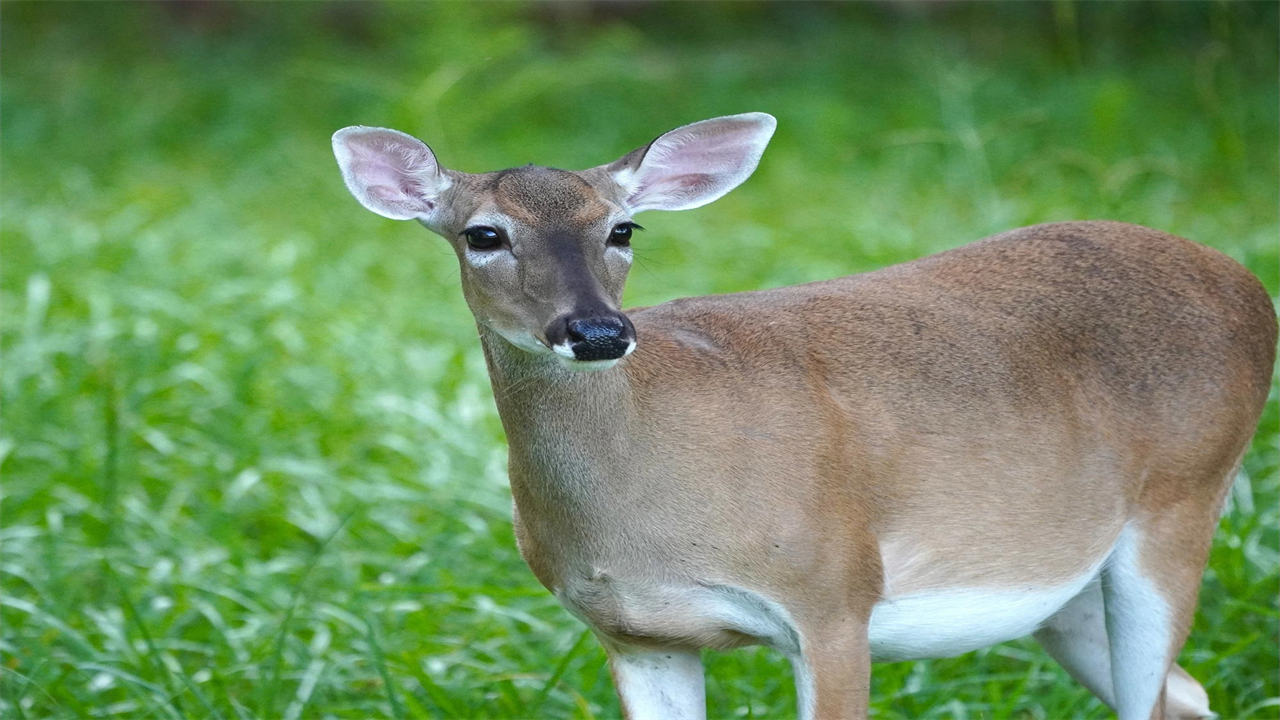White-Tailed Deer Found To Be Huge Reservoir of Coronavirus Infection
0 View
Share this Video
- Publish Date:
- 15 November, 2021
- Category:
- Covid
- Video License
- Standard License
- Imported From:
- Youtube
Tags

New research from the US has shown that white-tailed deer are infected with SARS-CoV-2, the virus that causes COVID-19 in humans. Antibodies were found in 40% of deer tested from January to March 2021 in Michigan, Pennsylvania, Illinois and New York. A second unpublished study found the virus in 80% of deer sampled in Iowa between November 2020 and January 2021.
Such high infection levels led the researchers to conclude that deer are actively transmitting the virus to each other. The scientists also identified several SARS-CoV-2 variants, suggesting many human-to-deer infections have occurred.
The large numbers of white-tailed deer in North America and the fact that they often live close to humans provide several opportunities for the disease to move between the two species. This can include conservation, field research, recreation, tourism and hunting. In fact, hunters are probably one of the most obvious sources of possible reinfection as they regularly handle dead animals. It has also been suggested that water sources contaminated with SARS-CoV-2 may provide a pathway for transmission, although this has yet to be proven.
There are many ways the virus could have spread from human to deer.
Human-to-deer and deer-to-deer transmission is believed to drive the rapid spread of the disease among US white-tailed deer populations. This is particularly evident during the early months of 2021, when COVID infections ran rampant in the human population. Previous studies have shown that SARS-CoV-2 can be transmitted from humans to pets and captive animals, including cats, dogs, zoo animals and, most notably, farmed mink. But until now, the disease had not been shown to spread among animal species.
White-tailed deer are the most common large mammal in North America with a range stretching from Canada to South America. The US population alone is estimated to have 30 million animals. It is a social species that lives in family groups of two to 12 individuals that can thrive in a range of habitats, including urban parks and forests.
These aspects of their ecology and behavior have made them of some sort of particular concern when it comes to the spread of disease, including bovine tuberculosis and chronic debilitating diseases. These pathogens have already led to significant effects on the health of wild and domestic animal populations around the world.
The findings of these latest studies have raised concerns that white-tailed deer could be a reservoir of SARS-CoV-2. Not only could this easily infect large numbers of animals, but, more worryingly, it could also flow back to humans.
This type of infection cycle was documented in workers on infected mink farms, eventually leading to the Danish government euthanizing their entire captive population of 17 million animals. It is important to underline that there is currently no evidence of SARS-CoV-2 transmission from white-tailed deer to humans. Initial experimental work also suggests that infected deer usually have no symptoms. However, the transmission of diseases in wildlife populations has significant impacts on human and animal health.
Potential source of new variants
There is a possibility that viral mutation in a reservoir host, such as white-tailed deer, could lead to new variants of the disease. These variants can lead to higher infection rates, increased virulence (severity of symptoms) and prove more effective at evading the human immune system. Likewise, any reinfection from wildlife reservoirs could also complicate our long-term efforts to fight and suppress the disease.
Influenza, which jumps easily between birds, humans and other mammals (particularly pigs), presented similar problems. These multiple reservoirs of disease can lead to the emergence of new strains against which people have lower immunity, as was the case with swine flu in 2009.
It is important to note that there are limitations to these studies, both in terms of the methods used and the limited geographic scope of study. The most recent and unpublished study used the latest genetic approaches to reliably detect SARS-CoV-2 in tissue samples, but focused only on deer in Iowa. While the antibody tests in the first study were conducted in four states, but only show that the animal has been exposed to the virus. Still, the combined findings have shown that SARS-CoV-2 transmission is likely widespread in white-tailed deer.
There is much we have yet to learn about the evolving situation with COVID and deer. Key topics to focus on include understanding how the virus is transmitted from human to deer and determining the risk of reflux to the human population. Urgent research is needed to assess the risk this potential reservoir of SARS-CoV-2 poses to humans, as well as the possible spread of the virus to other animal species that deer interact with, such as predators and scavengers.
Written by:
Graeme Shannon – Zoology Lecturer, University of Bangor Amy Gresham – PhD Student, Behavioral Ecology, University of Bangor Owain Barton – PhD Student, Ecology, University of Bangor
This article was first published in The Conversation.
For more information on this topic, read More than 80% of deer under study are positive for COVID – they can be a reservoir through which the virus circulates continuously.










